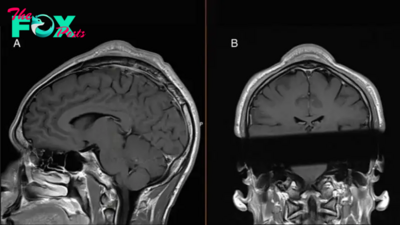Health
Scientists invent tool to see how 'healthy' your gut microbiome is — does it work?
The gut microbiome, the community of microorganisms that live in the colon, may shape a person's risk of developing chronic diseases, such as type 2 diabetes and heart disease. Now, scientists have developed a computational tool that they say can reveal how "healthy" a person's gut microbiome is, using data from a single stool sample.
Although the concept is intriguing, experts told Live Science they have reservations about how useful the new tool would actually be to patients.
The tool, called the Gut Microbiome Wellness Index 2 (GMWI2), gives users a score between -6 and +6. The higher the score, the "Healthier" their gut microbiome reportedly is, and vice versa. In a recent study, published Aug. 28 in the journal Nature Communications, researchers found that the GMWI2 was 80% accurate at differentiating between a "Healthy" gut microbiome, on the positive end of the spectrum, and an "unHealthy" one, on the opposite end. The tool was trained on stool samples from 8,000 people and then tested on samples from 1,140 people.
Anyone can freely download and use GMWI2, but they'll need a "basic computer science or bioinformatics background" to interpret the results, study co-author Jaeyun Sung, an assistant professor of surgery at the Mayo Clinic in Minnesota, told Live Science.
Related: The gut microbiome has a circadian rhythm. Here's how it might affect your health.
The team hopes that eventually, anyone will be able to get a gut Health score from their local clinic by providing a stool sample, Sung said. However, other experts have expressed concerns about the potential utility of such a tool. They wonder what it means to have a "Healthy" gut microbiome in this context and who might stand to benefit from learning their gut Health score.
Defining "healthy"
GMWI2 is built upon a type of machine learning, an artificial intelligence (AI) tool that can make predictions about a piece of data based on a set of rules it has been trained to follow. Typically, scientists "train" the AI by providing troves of data from a given population, and then once it has picked up common patterns in that data, the tool can make predictions about new data from a different group of people.
-

 Health1d ago
Health1d agoTeens Are Stuck on Their Screens. Here’s How to Protect Them
-

 Health2d ago
Health2d agoHow Pulmonary Rehab Can Help Improve Asthma Symptoms
-

 Health2d ago
Health2d ago10 Things to Say When Someone Asks Why You’re Still Single
-

 Health3d ago
Health3d agoThe Surprising Benefits of Talking Out Loud to Yourself
-

 Health3d ago
Health3d agoDoctor’s bills often come with sticker shock for patients − but health insurance could be reinvented to provide costs upfront
-

 Health3d ago
Health3d agoHow Colorado is trying to make the High Line Canal a place for everyone — not just the wealthy
-

 Health3d ago
Health3d agoWhat an HPV Diagnosis Really Means
-

 Health4d ago
Health4d agoThere’s an E. Coli Outbreak in Organic Carrots



























